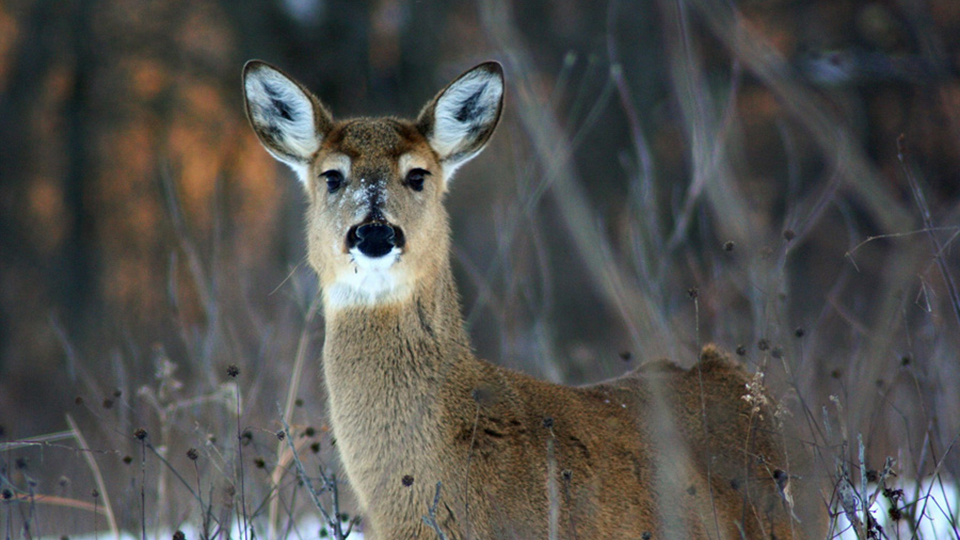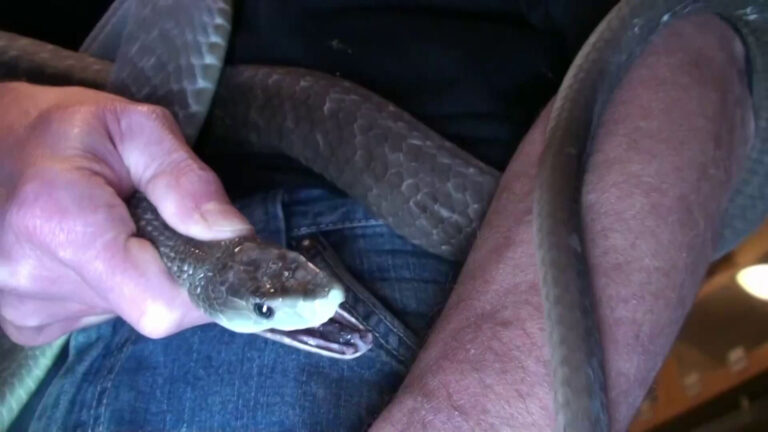How widespread is the coronavirus among Wisconsin's deer?
Scientists are finding that white-tailed deer around the nation are carriers of SARS-CoV-2, and are seeking to learn whether the species could serve as a wildlife reservoir for the virus.
By Will Cushman
February 8, 2022

(Credit: Courtesy of the Wisconsin Department of Natural Resources)
After learning that white-tailed deer carry the virus that causes COVID-19 at “stunning” rates, scientists in Wisconsin are participating in a national study seeking to understand just how common SARS-CoV-2 infections are among one of the state’s signature wildlife species. The research is also trying to illuminate whether deer could serve as a reservoir for this coronavirus to mutate and possibly jump back to humans in a new form.
Wisconsin Department of Natural Resources staff started collecting blood and nasal swab samples from deer in the state in late 2021, according to Lindsey Long, a wildlife veterinarian at the agency.
Specimen collection began near the end of Wisconsin’s annual gun deer season. The DNR has collected specimens from some deer harvested by hunters, but Long expects the agency to initially contribute only 100 or so samples, including from deer culled near airports around the state. The eventual goal is to get 500 or more samples, she said.
The U.S. Department of Agriculture is spearheading the research after a more limited USDA study found evidence of widespread infection among deer herds in four states — Illinois, Michigan, New York and Pennsylvania.
Researchers studying Chronic Wasting Disease among deer in Iowa were the first to identify SARS-CoV-2 antibodies in the species, common around North America and particularly in Wisconsin. They found that as many as a third of the state’s deer had been infected with the virus since early 2020. Similar evidence has also been found in Ohio and Texas.
“The level of infectivity we found in these animals was truly stunning,” said Suresh Kuchipudi, a virologist at Pennsylvania State University who participated in the study in Iowa. Kuchipudi spoke with PBS NewsHour for a Feb. 2, 2022 story about the research.
While deer don’t appear to get sick from the virus, they apparently can spread it very easily, Kuchipudi said.
Evidence also suggests deer can easily pick up the virus from humans.
In Iowa, deer were found to have been infected with multiple variants that were already circulating among humans. This discovery indicates the animals have acquired the virus from humans a number of times. Importantly, variants that have been identified in deer are identical to those found in humans, meaning they hadn’t gained unique mutations while spreading among the animals.
One of the goals of the ongoing research in Wisconsin and elsewhere is to gauge the likelihood of the SARS-CoV-2 virus mutating in deer. Another is to assess whether a deer-specific variant of this coronavirus could be transmitted back to humans.
The prospect is concerning for scientists who track the ability of viruses to cross between species. One of those scientists is Tony Goldberg, a disease ecologist at the University of Wisconsin-Madison.
“We do not know whether a deer, dead or alive, can transmit the virus back to humans,” Goldberg said during a Dec. 1, 2021 episode of Here and Now‘s Noon Wednesday. “That’s a hugely important question.”
The question is so important, Goldberg said, because if a mutated version of the virus could spread from deer back to humans, it could pose yet another new public health threat depending on its characteristics.
For the time being, though, there remains no evidence of either deer-specific variants or transmission of SARS-CoV-2 in any of its forms from deer to humans.
First, Long said scientists want to find out how deer are getting infected in the first place, as well as how the virus spreads within the species.
“The first [goal] is to see if it persists and maintains circulation in white-tailed deer populations,” Long said, adding that the multi-state effort will also assess whether there are regional differences in the virus’s spread among deer.
For his part, Goldberg said in a February 2 email to PBS Wisconsin that he believed the research would find the virus is already widespread in white-tailed deer across the continent.
“I suspect it’s already all over North America,” he said.
 Passport
Passport











Follow Us